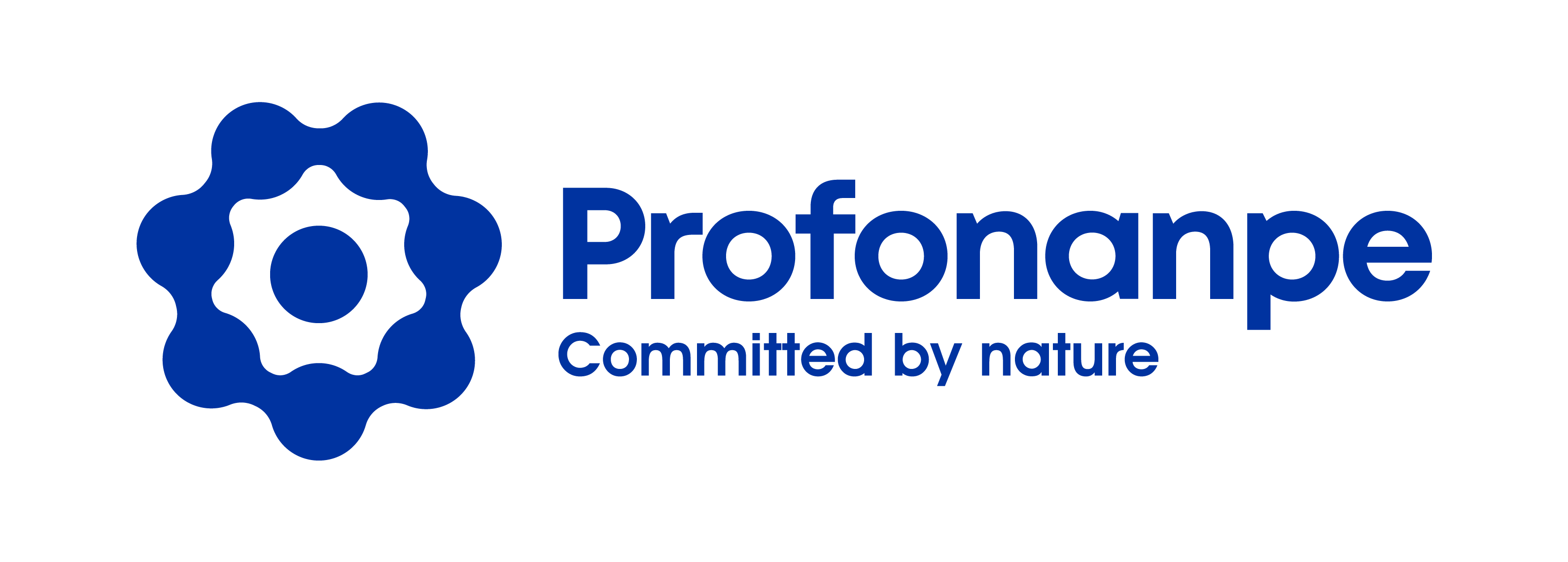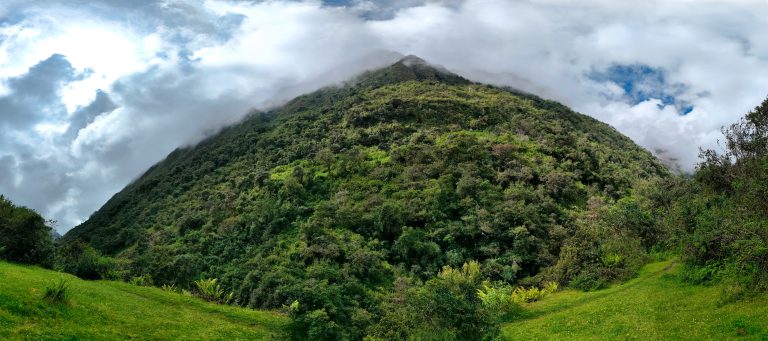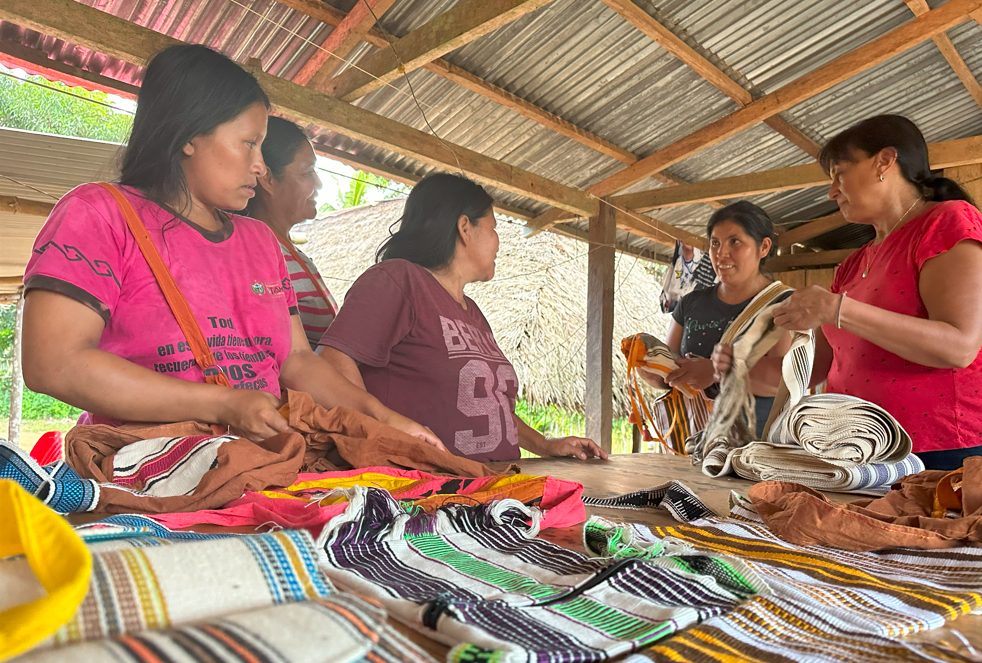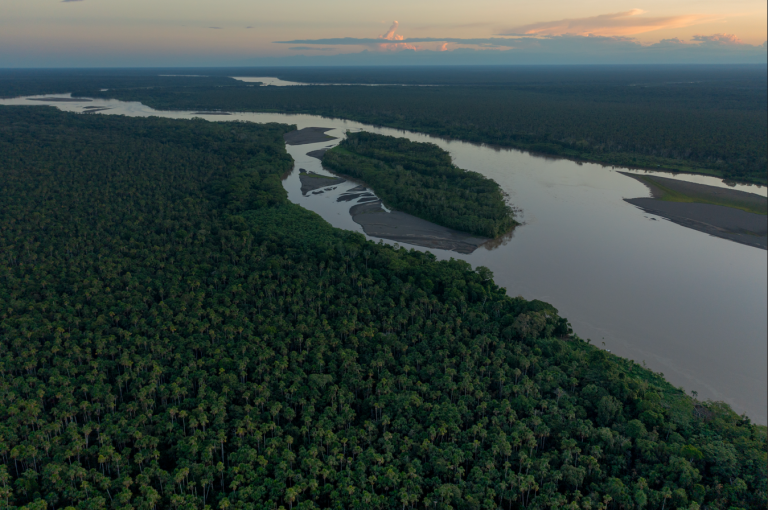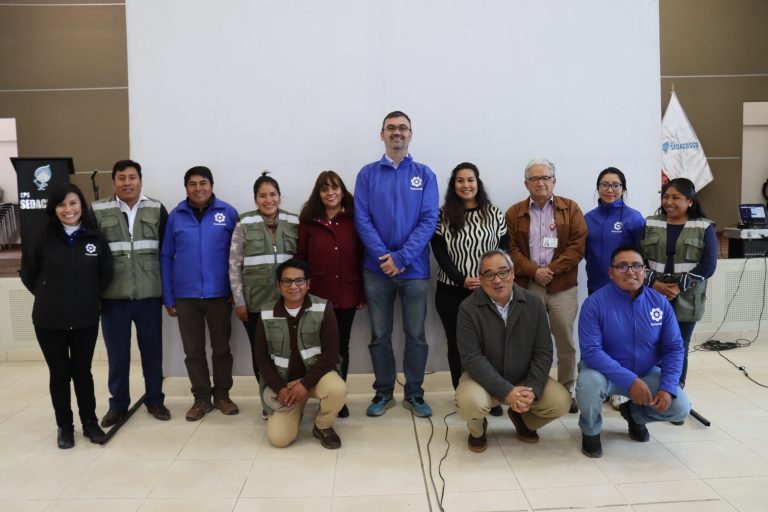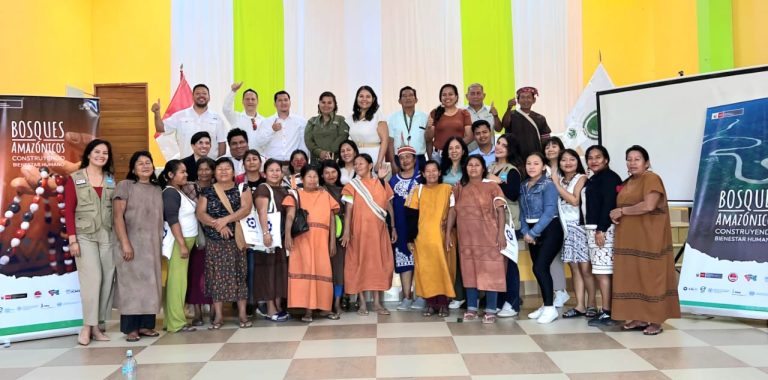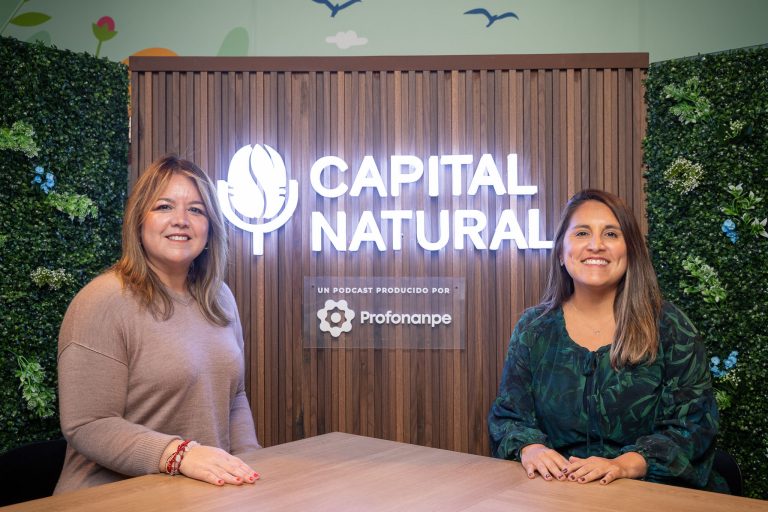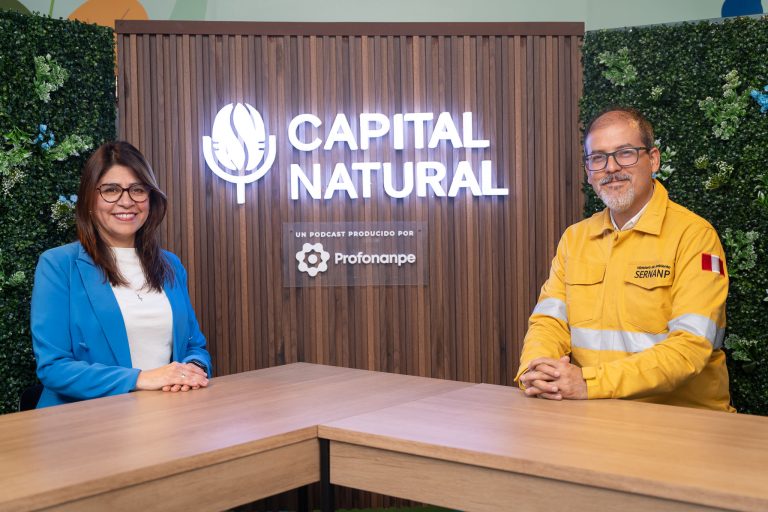Panoramic view of the proposed private conservation area – Huata
Photo: Jonathan Chancasana
The proposed implementation of the Huata PCA has allowed the development of workshops focused on the textile and pedagogical process, as well as the implementation of a communal nursery.
Since July 2024, several activities have begun to transform the local perception of conservation and have awakened a growing interest in the Huata Private Conservation Area (PCA) proposal. Developed intermittently since the beginning of the project, these initiatives keep the vision of self-sustainability in mind.
These include environmental education activities aimed at children and adolescents, embroidery as a productive alternative for mothers, and a community nursery aimed at the general population.
Beyond training and learning, the actions carried out have raised community awareness of the message that conservation not only protects the natural environment, but can also be an opportunity for sustainable development.
Community nursery: restoration and sustainability
One of the first strategies that helped promote conservation actions in the PCA was the installation of the communal nursery in Huata. Its construction responded to the increasing deforestation observed within the area, the change in land use for agricultural purposes and the negative effects of forest fires, such as the loss of native biodiversity.
The communal nursery initiated different short- to long-term sustainable recovery strategies. Its main objectives are the propagation of native species for restoration and production of agrosustainable species of interest to the community, in order to strengthen local agroforestry systems.
Prior to implementation, coordination meetings were held to define the working group and the location of the nursery. The support of the villagers, together with the social projection group “Sumaq Allpa Tarpuy” of the Universidad Peruana Los Andes, allowed the installation of the nursery and the following results:
- The construction of a communal nursery of 30 m².
- The consolidation of a board of directors and a work team made up of 13 community members.
- The planting of 542 avocado seeds with 72 germinated to date, which allowed training in sustainable agroforestry to a population that has it among its main agricultural activities.
- The collection of 450 cuttings, 50 cuttings and 11 species of seeds of various native species. All this material is in the nursery of the Universidad Continental -a collaborating institution-, where it is being treated for its future use in the restoration and propagation of species.
This activity has succeeded in fostering community participation and promoting the idea that conservation and productivity can go hand in hand. Through the implementation of sustainable agroforestry or the restoration of degraded areas, the community has begun to internalize the importance of balanced and sustainable community development.
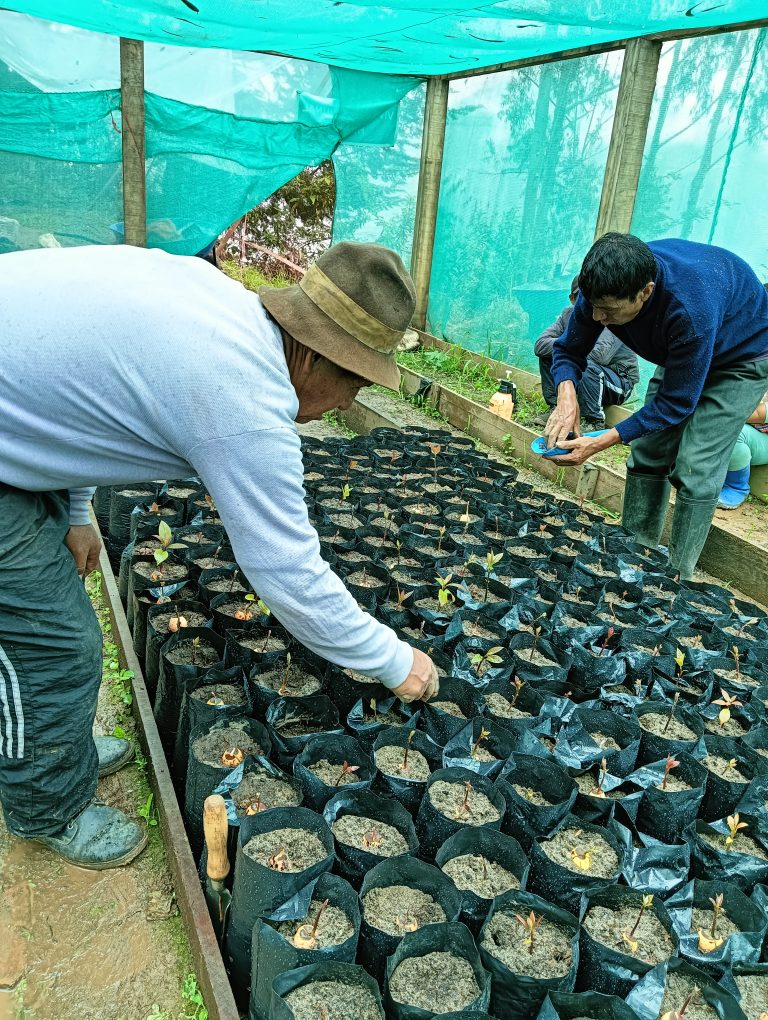
Seedling nursery production
Photo: Leidy Pallarco
Embroidery workshops: art and conservation
On the other hand, with the growing expectation of the creation of the PCA, the villagers have shown interest in the fact that conservation can also become a family’s economic livelihood. They even want to link the preservation of species of interest with art and tradition, in order to achieve a deeper connection with their natural and cultural environment.
In this sense, the embroidery workshop initiative seeks to strengthen the skills of the women of the community, promote creativity and rescue traditional techniques that the community maintains.
In the first session, participants learned about basic embroidery stitches and received an introduction to the importance of representing native birds and plants in their designs. This not only reinforces local identity, but also raises awareness of the value of biodiversity in their environment.
Through these proposals, it is also possible to revalue customs and identities, reconnecting the Huata community with its territory through artistic expressions.
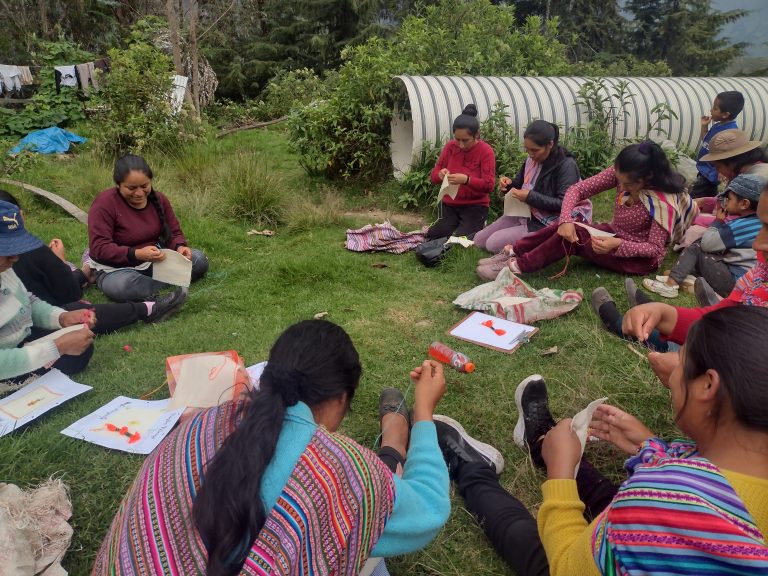
Mothers of families gathered at the embroidery workshop.
Photo: Mishell Aquino
Environmental education: training promoters of the future
How do we get people to recognize and understand the importance of their natural resources? Since the beginning of the implementation of the PCA, it has been observed that the people of Huata have shown great interest in recognizing, understanding and knowing the relevance of species within the ecosystem. For this reason, environmental education has been a fundamental pillar of the project.
Implementing it seeks to raise awareness from an early age about the importance of conservation. Through interactive and dynamic workshops, we have worked with Huata’s educational institutions to sensitize their students to the value of biodiversity and the role they can play in protecting it.
This process included presenting a plan to parents and holding five workshops on specific dates:
- “Getting to Know My Birds”: October 14, 2024
- “Rainbow Walk”: October 15, 2024
- “Getting to Know My Environment”: November 18, 2024
- “A Day with Wings”: November 19, 2024
- “Ecosystem Doctors”: December 16, 2024
In addition, a presentation of the achievements was made to the parents of the community during the year 2024. This made the impact of the environmental education program visible and reinforced the need to integrate conservation into the community’s daily life. Through these actions, we also seek totrain a new generation of intergenerational environmental promoters committed to protecting their environment.
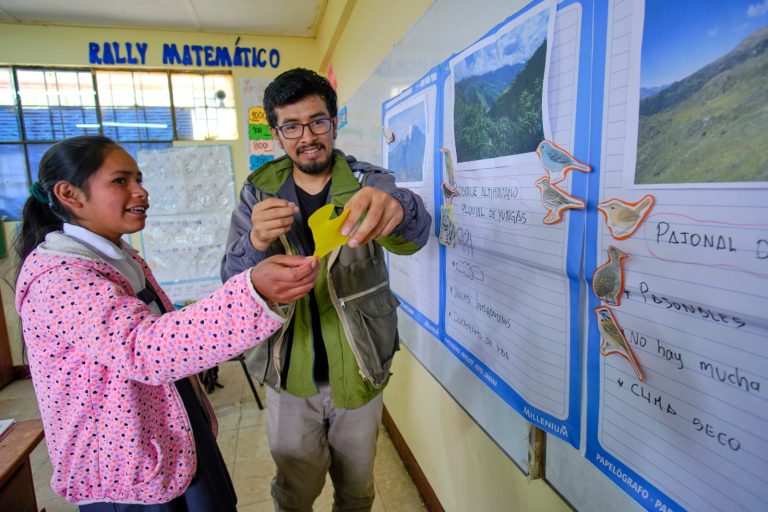
Ecosystem environmental workshop in the community of Huata
Photo: Jonathan Chancasana
A sustainable future for Huata
In short, the initial steps are already being taken to change the paradigm of a community, which is also beginning to transform the local perception of conservation. All this, thanks to the proposed implementation of the Private Conservation Area.
Environmental education, the community nursery and embroidery workshops demonstrate that it is possible to generate a balance between community development and biodiversity protection. The commitment of the villagers and the joint work with various institutions are laying solid foundations for the consolidation of the Huata Private Conservation Area.
As these initiatives grow stronger and become self-sustainable, the idea that conservation is not a limitation, but an opportunity for the well-being and development of the entire community will gain strength. The change in the community paradigm that is being generated by the creation of the PCA helps to generate new spaces for conservation.
In order to give continuity to the development of these activities, each strategy will continue to be improved and new conservation actions will be implemented. In this way, it will be possible to strengthen the community’s commitment to preserve and care for natural resources. It is hoped that this change will be welcomed by the villagers after the creation of the PCA in perpetuity.
Contact
Fressia Ames Martínez
ANDINUS President and researcher

